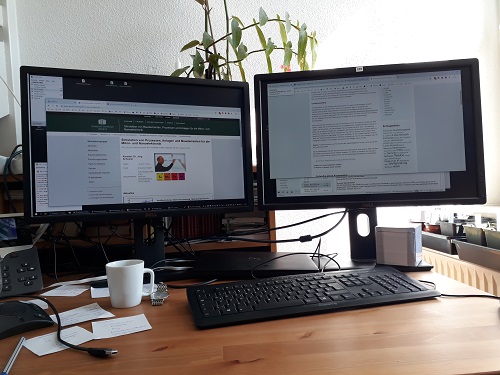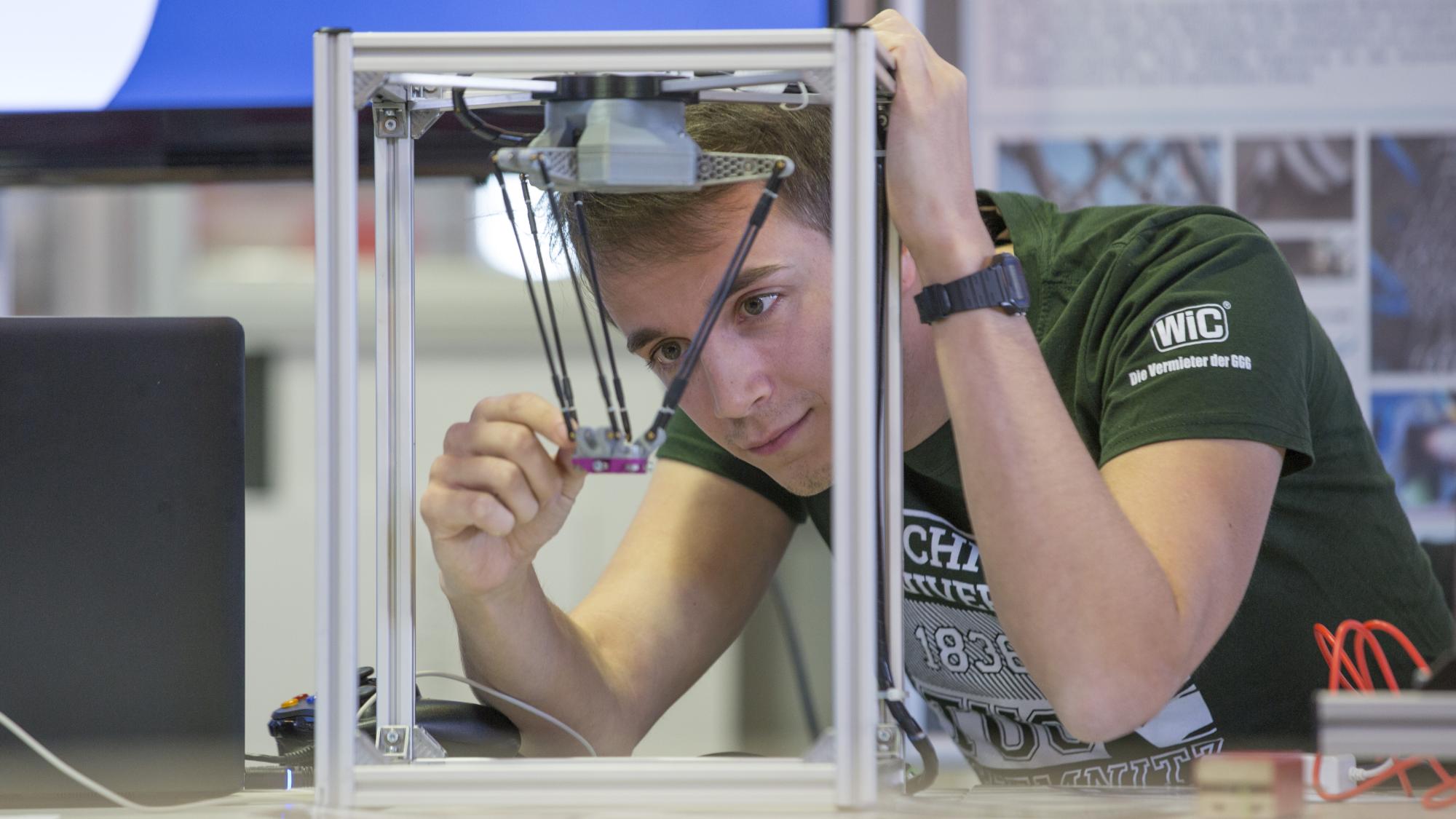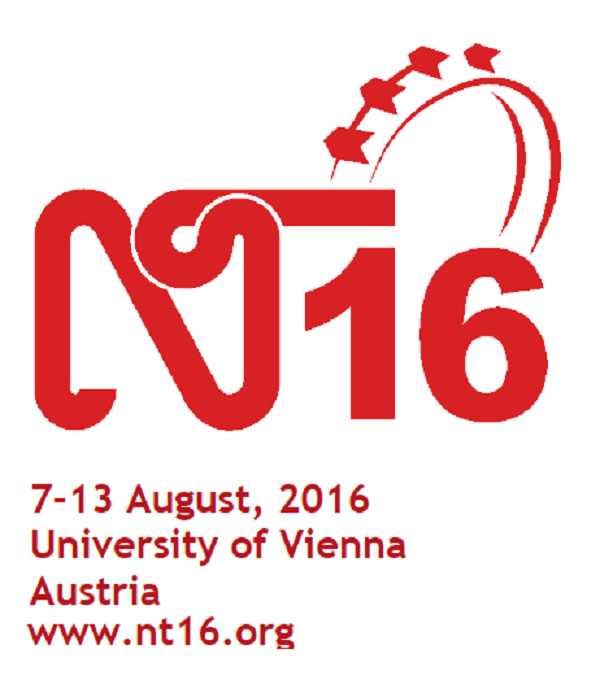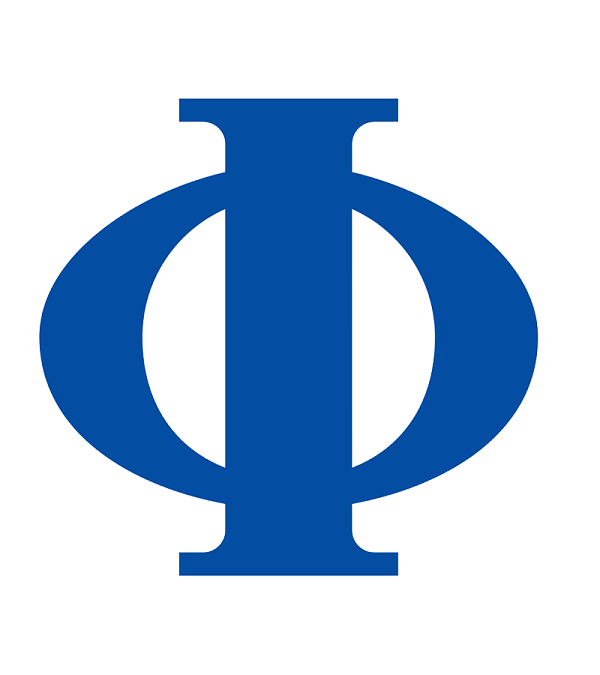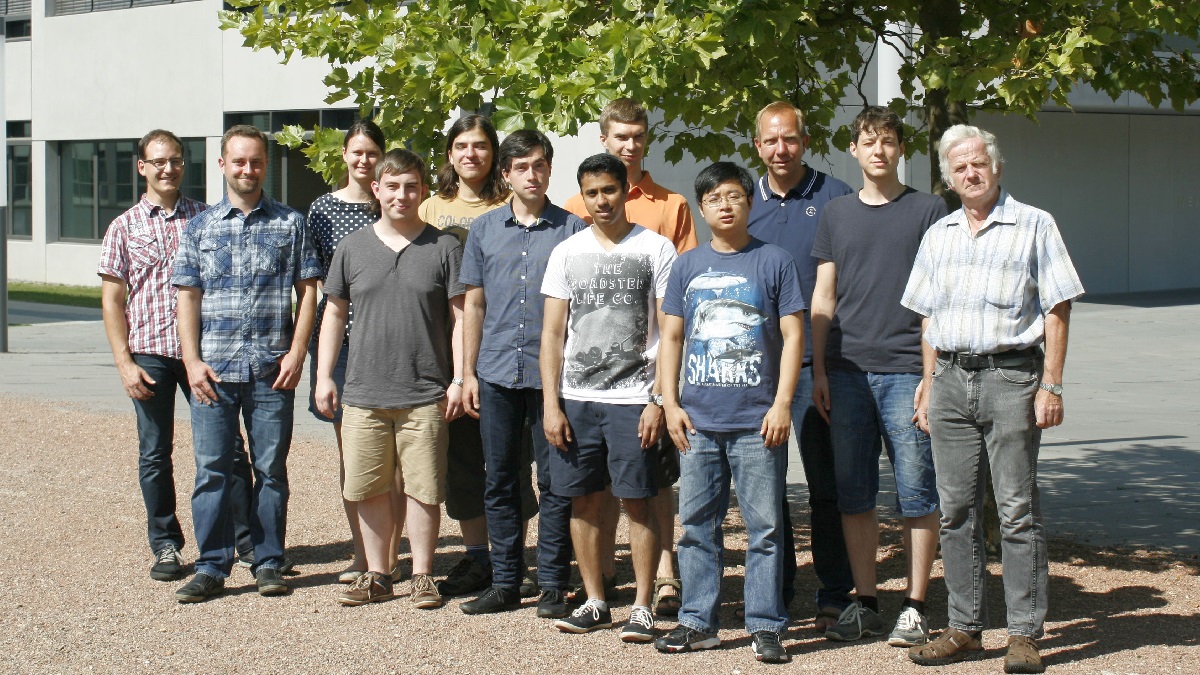Aktuelles
März 2020: Coronakrise - Simulationsgruppe bleibt aktiv im Homeoffice
Wir bleiben aktiv im Homeoffice und sind wie gewohnt per Mail oder telefonisch erreichbar. Solange die Rechentechnik und die Datennetze durchhalten, können wir nach derzeitigem Stand alle Projektarbeiten und studentische Forschungsarbeiten am Laufen halten. Wir erforschen ständig neue Wege der digitalen Zusammenarbeit. Wenn diese Krise überhaupt positive Folgen hat, werden es wohl Innovationen bei der gemeinsamen Arbeit jenseits des herkömmlichen Büros sein.Februar 2020: Cover Feature - Ferrocenyl‐Pyrenes, Ferrocenyl‐9,10‐Phenanthrenediones, and Ferrocenyl‐9,10‐Dimethoxyphenanthrenes: Charge‐Transfer Studies and SWCNT Functionalization
Autoren: Andrea Preuß, Xiao Hu, Jörg Schuster, Stefan Spange, Stefan E. Schulz, Heinrich Lang et al.Zeitschrift: Chemistry European Journal 26, 2635 Xiao gelingt mit diesem Beitrag, der in Kooperation mit Chemnitzer Chemikern und Forschern des MAIN entstanden ist, unsere erste Titelseite.
Oktober 2019: Review paper - Carbon Nanotubes for Mechanical Sensor Applications
Autoren: Christian Wagner, Thomas Blaudeck, Peter Meszmer, Simon Böttger, Florian Fuchs, Sascha Hermann, Jörg Schuster, Bernhard Wunderle, Stefan E. SchulzZeitschrift: Phys. Status Solidi A 216, 1900584 Christian und Thomas stellen in diesem Übersichtsartikel verschiedenste Anwendungen von Kohlenstoffnanoröhrchen für mechanische Sensoren vor. Der Artikel ist Teil eines Sonderbands der zugleich als Abschlussbericht der DFG-Forschergruppe 1713 (Sensorische Mikro- und Nanosysteme) dient. Weitere Informationen gibt es in dieser Pressemeldung der TUC .
Veröffentlichung: Strain and screening: Optical properties of a small-diameter carbon nanotube from first principles
Autoren: Christian Wagner, Jörg Schuster, André SchleifeZeitschrift: Phys. Rev. B 99, 075140 Carbon nanotubes (CNTs) are a one-dimensional material system with intriguing physical properties that lead to emerging applications. While CNTs are unusually strain resistant compared to bulk materials, their optical-absorption spectrum is highly strain dependent.
Veröffentlichung: Electron transport through NiSi2–Si contacts and their role in reconfigurable field-effect transistors
Autoren: Florian Fuchs, Sibylle Gemming, Jörg SchusterZeitschrift: Journal of Physics: Condensed Matter 31 (2019),355003 A model is presented which describes reconfigurable field-effect transistors (RFETs) with metal contacts, whose switching is controlled by manipulating the Schottky barriers at the contacts. The proposed modeling approach is able to bridge the gap between quantum effects on the atomic scale and the transistor switching.
Lange Nacht der Wissenschaften
Wann: Samstag, 4. Mai 2019 | ab 18 Uhr bis ca. 24 UhrDie Simulationsgruppe stellt ihre Aktivitäten im neuen Forschungsbau MAIN vor.Veröffentlichung: Electrical Conductivity Modeling of Graphene-based Conductor Materials
Autoren: Leo Rizzi, Andreas Zienert, Jörg Schuster, Martin Köhne, Stefan E. SchulzZeitschrift: ACS Applied Materials & Interfaces 10 (2018) 43088-43094We present a network simulation method to model the electrical conductivity of graphene-based conductors. The method considers all of the relevant microscopic parameters such as graphene flake conductivity, interlayer conductivity, packing density, and flake size.
17th International Conference on the Science and Application of Nanotubes and low-dimensional materials
Zeitraum: 07.08.2016 bis 13.08.2016F. Fuchs: An Atomistic Model for Carbon Nanotube Based Field-effect Transistors: Interband Tunneling and Device Scaling
F. Teichert: Electron transport in defective metallic and semiconducting carbon nanotubes
C. Wagner: Ab initio calculation of optical spectra of strained carbon nanotubes
DPG-Frühjahrstagung
Zeitraum: 06.03.2016 bis 11.03.2016F. Fuchs: Electronic Structure and Transport Properties of Thin Silicon Nanowires
M. Huber: Modelling of a coupled mechanical-hydrodynamic system for flow control
F. Teichert: Electron transport in defective metallic and semiconducting carbon nanotubes
C. Wagner: Electronic structure calculations for carbon nanotubes under strain

